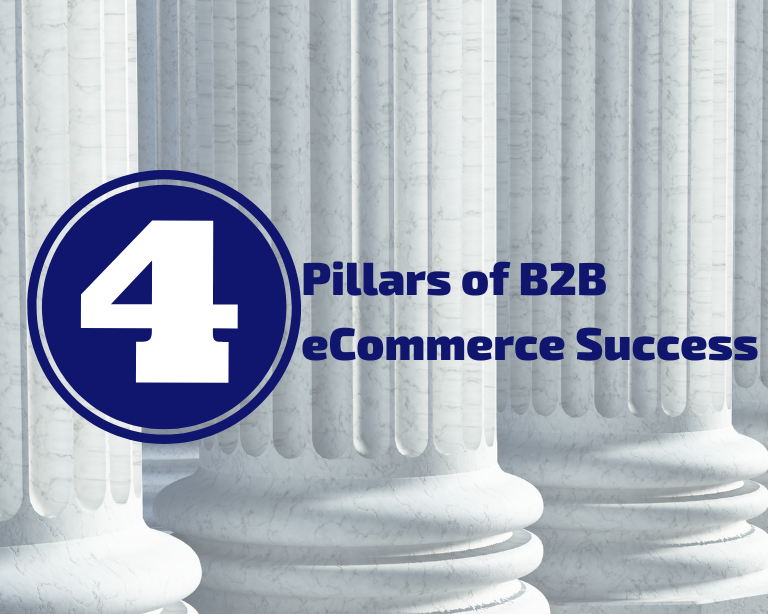6 Key Questions to Ask Yourself, and Your Team to Keep Strategic Growth Going
As more software changes continue to loom ahead for B2B eCommerce, let’s look at how you can best de-risk your replatforming efforts and plan as you future proof your eCommerce Site. This is meant to make you think through changes, obstacles, and most of all – possibilities for the future of your eCommerce Channel. For practical purposes, scrutinize your activities by working through these questions that we ask our clients:
1. Have your business goals, solutions changed in the last year? What are your technical and organizational constraints to achieving those goals?
If any factory equipment is running on old operating systems or an application is outdated and the vendor tells you that support will cease, the alarm should be sounding. You don’t want to be dependent on any of these – better to act and decide if you will be supporting the tech yourself, get third party help or go ahead and migrate to another system.
2. What are your current risks and limitations to reaching your long-term goals?
Evaluating how your products are manufactured, distributed and sold, including every tool and customer touch point will be key in evaluating risks and limitation. Not investing in digitizing will become hugely disruptive for you, but at what point and then knowing what you want to do, when and how in order to scale will be imperative. If you are using any digital commerce platform, you will need to evaluate how it can scale, add tools, etc.
3. If your current platform would soon be without support, what options can you consider?
If you’re on SAP Hybris, Magento or any other platform, then make sure you know your vendor’s plans. Software lifecycle management is key for CIOs, and at the very least, you should have a roadmap of where the product is heading, what features and functions are planned, and which hardware and software the package or service will support and integrate with.
If you’re on any End-Of-Life list, the first thing to say is ‘start moving now’ because, as the Magento brouhaha showed, these can be time consuming and you run the risk of procrastination throughout the company. If you rely on an eCommerce platform, it makes business sense to have a system that offers the most flexibility with the most security. Check out all your options!
4. Can you meet and exceed your growth objectives with your current platform?
Thinking three to five years ahead, will you be able to keep up with demand, market innovations? Most companies start small, investing in software like Shopify or Woo Commerce, designed for small-scale operations. Then they begin to grow, and as it happened, things snowballed with eCommerce revenue. Now, scalability is imperative to handle hundreds, thousands and yes millions of SKUs, kitting, buyers with multiple location, multiple payment tiers and more. Just look how fast we’ve been integrating artificial intelligence in all aspects of manufacturing and distribution and we are barely touching the surface of possibilities. Likewise, your platform should be able to keep integrating with incoming data, even as digital self-service continues to grow.
5. What are realistic migration options for your digital channel? Will a look alike solution work for long term growth?
If your software partner has your product on the End-of-Life list, then it is easy to just upgrade to whatever they offer. Your product looks the same, has the same features and the price tag is similar. But you should also consider how your company’s digital operation could grow and what you should do now to prepare for when that happens. Reading the fine print in any Cloud partner is key – will your fees increase automatically if they see the number and dollar amount of transactions? Your choice here can affect not only your ability to move fast but also your budgets in the long term. A simple upgrade or swap out might not be the best choice.
6. Can you benefit from microservices based solution? From composable? Do you know all your options?
With the uncertainty of the global economy, the ongoing acceleration of digital activity and changes within eCommerce, most companies are looking for flexibility. Most are moving away from being locked into a single vendor’s suite of products. Taking a hard look at what you are building, what you want to add or make your software more flexible, is key.
After you brainstorm, imagine what can be, short term or long term, remember that your decision will impact your operations. With our years of experience building seamless eCommerce with results, CSS Commerce can help you create and execute an all-encompassing digital strategy that best fits your distributor or manufacturing needs covering the spectrum of commerce, advanced search and supply chain visibility. Learn how we optimize modern commerce in B2B and go ahead, ask us question around your digital commerce platform needs.
By Eunice Munoz


